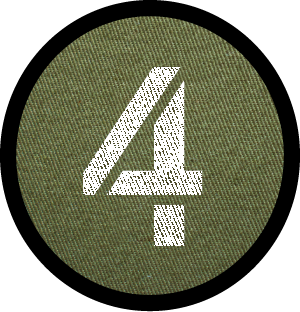
When the 92nd began to liberate towns in Italy, they encountered Italian partisans who resisted against the Fascist Italian Forces who still fought alongside German troops. Many of the partisans were from the local villages and some were even veterans of Italian Forces that fought against the Soviets on the Eastern Front. Included in their ranks were even former Soviet prisoners of war who escaped from captivity and joined to fight against the German/Italian Forces. Some soldiers from the 92nd would work closely and even live with the partisans while conducting operations. Soldiers such as Otis Zachary from the Cannon Company of the 366th Infantry Regiment stated, “The partisans and the Russians are really good fighters.” (Braided in Fire p.153)
Cuando el 92.º comenzó a liberar ciudades en Italia, se encontraron con partisanos italianos que resistieron contra las fuerzas fascistas italianas que todavía luchaban junto a las tropas alemanas. Muchos de los partisanos eran de las aldeas locales y algunos incluso eran veteranos de las fuerzas italianas que lucharon contra los soviéticos en el frente oriental. En sus filas se incluían incluso ex prisioneros de guerra soviéticos que escaparon del cautiverio y se unieron para luchar contra las fuerzas alemanas/italianas. Algunos soldados del 92.º trabajarían estrechamente e incluso vivirían con los partisanos mientras realizaban operaciones. Soldados como Otis Zachary, de la Compañía de Cañón del 366.º Regimiento de Infantería, afirmaron: “Los partisanos y los rusos son realmente buenos luchadores”. (Trenzado en Fuego p.153)
The terrain the 92nd Infantry Division encountered while serving in Italy presented a challenge for transporting supplies to its elements fighting in the mountains and hills of Northern Italy. Due to the steep terrain and lack of quality roads available for trucks to drive on, the 92nd and other allied divisions came to rely on teams of mules to move supplies to troops stationed in these difficult-to-reach areas. The teams consisted of a mixture of officers and soldiers from the 92nd as well as Italians who volunteered and were skilled with working with horses and mules and could fashion needed equipment from discarded German parts. In total, a little over 600 men and nearly 550 horses and mules formed the unit.
El terreno que encontró la 92.ª División de Infantería mientras servía en Italia presentó un desafío para transportar suministros a sus elementos que luchaban en las montañas y colinas del norte de Italia. Debido al terreno empinado y la falta de caminos de calidad disponibles para el paso de camiones, la 92.a división y otras divisiones aliadas llegaron a depender de equipos de mulas para trasladar suministros a las tropas estacionadas en estas áreas de difícil acceso. Los equipos estaban formados por una mezcla de oficiales y soldados del 92, así como de italianos que se ofrecieron como voluntarios y eran expertos en trabajar con caballos y mulas y podían fabricar el equipo necesario a partir de piezas alemanas desechadas. En total, algo más de 600 hombres y cerca de 550 caballos y mulas formaban la unidad.
Tuesday–Saturday
10AM–4PM
Thursday
10AM–5PM
1PM – 5PM (Free Admission)
Sunday
Closed
Monday
Closed



